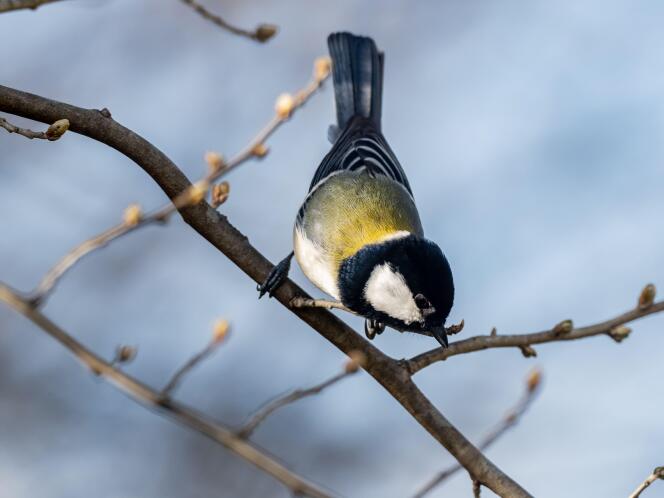


Let's welcome the return of the warm weather with a mini-miracle that's been replayed a thousand times: nesting and its fascinating procession of aerial ballets. Take a pair of chickadees, the most familiar of our garden's winged companions. Here we see these birds take it in turns to soar, twirl, land, peck, fly off again, turn on a wing, swoop and bustle about, beaks laden with twigs to build the nest, or weighted down with caterpillars to feed the young. In this incessant whirling, the partners take relentless turns, at the risk of collision. Sometimes, in fact, between Mr. and Mrs. Chickadee, an accident is narrowly averted – as the author of these lines once witnessed.
A lack of communication within the couple? This is suggested by the discovery of a novel body language in the Chinese tit (Parus minor), a smaller, paler-bellied cousin of our great tit (Parus major). Although its name doesn't suggest it, this passerine also lives in Japan where researchers from the University of Tokyo have been monitoring the behavior of eight pairs breeding in nesting boxes. The team monitored 321 nest visits. When the birds arrived at their nest to feed their brood, they often first landed on a nearby perch where they waited. And they always entered their box one by one.
But the researchers noted some strange behavior: When one of the two parents waited like this, it often flapped its wings in the direction of the other. Better still, "it flapped its wings exclusively in the presence of its partner who then almost always entered the nesting box first," said Toshitaka Suzuki, who co-authored this work, published on March 25 in the journal Current Biology. A behavior that ceased after the partner entered the dwelling.
Notably, females flapped their wings far more frequently than males: Six of the eight females studied exhibited this behavior, compared with only one of the eight males (and neither of the partners in the eighth pair), a sex-related difference whose "ecological significance remains intriguing," said the authors cautiously. Once a female had performed this gesture, the male usually entered the nesting box, regardless of which partner arrived first. If the female didn't flap her wings, she usually entered before the male.
According to the authors, this subtle flapping of wings is not simply a "deictic" gesture, i.e. one intended to designate an object of interest. "It's a symbolic gesture, conveying a specific message," they said, an elegant way of inviting a partner into the nesting box, without any physical contact. An "after you, dear one," in short.
You have 30.29% of this article left to read. The rest is for subscribers only.
